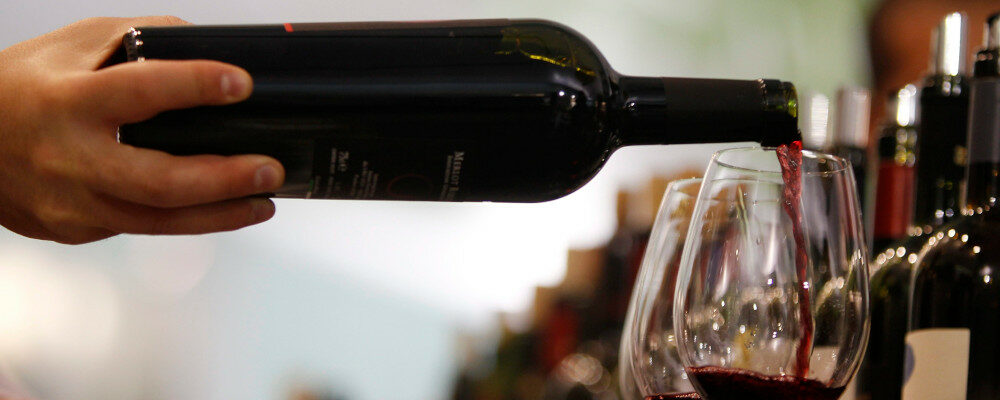It’s easy to forget that traveling is a privilege when you’re in the middle of it. It’s particularly easy when the lady at the airline customer service desk at the Frankfurt airport tells you that you are about to experience the privilege of an unscheduled overnight layover in Eddersheim rather than a night of negroni hopping in Turin, where the hotel room you’ve already paid for is waiting for you.
But it is a privilege, and one of its invaluable lessons is to learn to take what it gives you, make the best of it, and try to have fun since you’re paying for it anyway. The schnitzel and beer in Eddersheim are fine.
I have been traveling this week in the company of my young adult son, who is in between terms at university and his summer job. His mother’s side of our family is trans-Atlantic, and after seeing relations in the U.K., we have abandoned the rest of our nuclear family and come to Piedmont in Northern Italy to acquaint and reacquaint ourselves with the wine and food culture here. It’s worked out well, despite or maybe even because of some re-adjustments.
We had three winery visits planned in the hilly Barolo and Barbaresco regions around the old cathedral town of Alba, southeast of Turin. In the end, only one managed to happen. This was partly due to our German delay, but also just life getting in the way of the best-laid plans.
The one we made it to was exceptionally good in any event, and it will require its own column (coming soon). The other two will happen eventually (I hope), but not on this trip.
I like visiting wineries very much. Seeing how and where good wine is made only enhances its appreciation. So does getting to meet and observe the people who make it in their natural habitat. Sometimes that’s a multi-million dollar cathedral built to Dionysus and sometimes it’s not much more than a converted barn or garden shed.
One of the things wine writers look for when they visit wineries is the state of cleanliness of the operation, which can affect the quality of the wine. Another is the type, shape, and size of the vessels wine is fermented and stored in. There are quite a few of these physical manifestations of wine-making that can be deduced quickly from a visit.
I like to make a more esoteric observation in the form of the question: would I like to work here? Happy people make happy wine. Or, so I would like to believe.
And visiting a winery is more times than not fun. It’s not always true that the best winemakers are natural hosts, but it usually is. I joke that I am a professional houseguest, and I will readily admit that receiving generous hospitality is a prerequisite of this job I missed dearly during the lockdowns of the pandemic. Of course, wineries are also where they keep the wine, so if you’re interested in tasting as much as you can, they are the place to be.
It’s also at the winery that you get the inside stories, the bits of information that don’t make it on the website or the technical sheets that list lab results. This wine is made from vines planted by a grandfather after the war. Or, as a young woman the winemaker was called the crazy lady of the village because she refused to spray pesticides on her family’s rows.
But this week, we are not really on a wine trip so much as just traveling in wine country, and that offers a unique kind of education in and of itself. North Americans will probably never consume wine quite like the French, Italians, Argentines, or whoever. So what? We don’t drive like the Germans or Japanese either.
Seeing, and tasting, wine in situ helps to understand why it’s made beyond just the mechanics of how. Over the last decade or so, I have traveled more in Italy than anywhere abroad, and it’s fascinating to see subtle differences in wine culture.

It’s a small thing, but I have noticed that the standard wine order at dinner is one bottle, nearly always red. It’s one bottle whether the table is for two, three, or four. I don’t know if it’s magic or a really well-coordinated effort between servers and the kitchen, but the food arrives and is consumed in near-perfect synchronicity with the time it takes to finish the bottle. When the last plate is cleared, it’s time to order coffee (or grappa, or both).
A wine that carries a whole meal needs to be flexible. A wine that carries the menu choices of more than one person needs to be even more flexible. So, the wines I see most often on the tables of other patrons at dinner in Piedmont are less likely to be the big famous wines of the region like Barolo or Barbera, and more likely to be the lesser-known lighter reds like Dolcetto, Freisa, or Pelaverga. (All three of which are hard—though not impossible—to find in Canada for reasons elaborated in my last column.)
Could the flexibility of the wines for restaurant dinners be the reason that producers are rediscovering them? Or are the Italian diners just happy that there are more of them on wine lists and ordering them more? If it’s the latter, then is this an early signal for a wine trend to come?
I have no idea. Just the same when I think of lighter reds, I’ll think of them on the restaurant tables of Northern Italy and see if they pass the one-bottle-for-all-of-dinner test.




